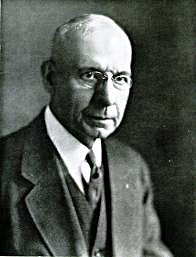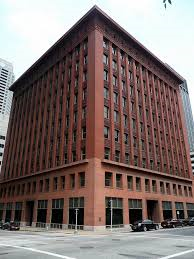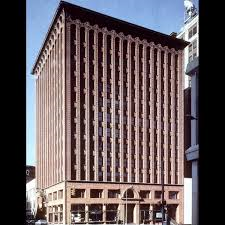John Muir, Tramp and Mountain Man
 Tuesday, September 16, 2014 at 11:17AM
Tuesday, September 16, 2014 at 11:17AM "The Camping Trip that Changed America." That's the title of a kid's book about John Muir, who is called the Father of the National Park System in the US.
 John Muir and Theodore Roosevelt in Yosemite ValleyDuring his 76 years (1838-1914) Muir probably camped outside on the ground more nights than he slept inside in a bed, but this particular campout is notable for who camped with Muir, in Yosemite Valley, for four nights in 1903. The then President Theodore Roosevelt had to decide whether to sign a bill granting federal protection to Yosemite, so he wrote Muir asking to camp with him there. Leaving behind his Secret Service entourage, the two men hiked and slept on pine boughs in the shadow of such icons as Half Dome and Yosemite Falls and El Capitan. A plaque alongside the Merced River marks the spot; "Here John Muir and Theodore Roosevelt camped, 1903, and talked forest good."
John Muir and Theodore Roosevelt in Yosemite ValleyDuring his 76 years (1838-1914) Muir probably camped outside on the ground more nights than he slept inside in a bed, but this particular campout is notable for who camped with Muir, in Yosemite Valley, for four nights in 1903. The then President Theodore Roosevelt had to decide whether to sign a bill granting federal protection to Yosemite, so he wrote Muir asking to camp with him there. Leaving behind his Secret Service entourage, the two men hiked and slept on pine boughs in the shadow of such icons as Half Dome and Yosemite Falls and El Capitan. A plaque alongside the Merced River marks the spot; "Here John Muir and Theodore Roosevelt camped, 1903, and talked forest good."
"Father of Forest Good" could be another honorific for John Muir, as well as “Savior of Yosemite,” and “Founder of the Sierra Club.” A pretty remarkable life and legacy for a man who said of himself in his 20's, as he set out with no plan but to "wander and botanize" from Wisconsin to Florida, a 1000 mile hike, "I am to become a tramp."
Next month I'm heading to Yosemite National Park for a week, so I've been reading up on the geology, biology, history of this iconic American landscape and how it has inspired so many authors and artists. My next few columns will celebrate this special place in the American consciousness, and the continuing pressures and challenges it faces today.
This week, let’s consider that tramp hero John Muir, the Scottish-American conservation hero, hiker, advocate, writer, odd mountain man, who saved Yosemite from development and ruin at human hands.
Like many nineteenth century American heroes (he reminds me of his almost exact contemporary John Wesley Powell, another amateur wanderer and naturalist savior, in this case, of the Grand Canyon) Muir is a man of paradox. Consider these contradictions in his life:
 John MuirBorn in Scotland, Muir came to the US as a boy with his strict Calvinist father. He rejected his father’s stern God and rebelled against his prohibition of any reading or knowledge beyond the Bible. But he remained a Scot in outlook, appearance (rough and bearded all his life), accent and even citizenship, nearly all his life. He dodged the Civil War draft, with his mother's encouragement, hiding (and botanizing) in Canada for year; he said that, as a Scot, he had no stake in a war between Americans. He only became a US citizen at age 65, when applying for a passport so he could travel around the world.
John MuirBorn in Scotland, Muir came to the US as a boy with his strict Calvinist father. He rejected his father’s stern God and rebelled against his prohibition of any reading or knowledge beyond the Bible. But he remained a Scot in outlook, appearance (rough and bearded all his life), accent and even citizenship, nearly all his life. He dodged the Civil War draft, with his mother's encouragement, hiding (and botanizing) in Canada for year; he said that, as a Scot, he had no stake in a war between Americans. He only became a US citizen at age 65, when applying for a passport so he could travel around the world. - He could not accept a God whose plan put "man" at the controlling top of all creation . Instead he rhapsodized and virtually worshipped the creative force of Nature itself and insisted that all of nature, animate but also rocks and glaciers had spirit, soul and equal value. But at the same time he used deeply religious and deistic language in conversation and writing; Yosemite was a “temple” which “preached. In this he was unlike all his fellow founders of the Sierra Club, who leaned more to the humanist and scientific world view. Muir would have been a perfect "spiritual but not religious." On his 1000-mile hike he carried three books, Milton, botanist Asa Grey, and the New Testament.
- He said the mountains taught him more than any book and he is often described as "anti-book learning," but he was very well read, had an extensive library, and left behind fascinating volumes with his detailed annotations - Emerson, Thoreau, Ruskin, Agassiz, Lyell.
- A loner and lover of solitude, he preferred to hike solo, no one to slow him down. He was impatient with city life and even family life; he did not marry or have children until his 40s, but he took a solo trip to Alaska within months of his wedding. Yet he also wrote in his mountaineering journals of his longing for companionship. He befriended another Scot, painter William Keith and they hiked and painted for months in the backcountry. He was thrilled when the aging and eminent transcendentalist Ralph Waldo Emerson agreed to meet with him in Yosemite. (It was a less successful camping trip, however, than the one with Teddy Roosevelt. Emerson's Boston Brahmin handlers would not let him sleep on the ground. Muir begged him to stay; “Meet your fellow ministers, the granite. You are a sequoia,” he told Emerson in praise. Emerson was moved, but reluctantly rode away to the city.)
- He probably inherited from his father a cynical view of human nature, but he grew only more depressed by how greedy and destructive people were of the wilderness. Yet he persisted in his later years in political advocacy and social organization, forming the Sierra Club, maintaining a voluminous correspondence with politicians and editors and business leaders, ever hopeful they would do the right thing. He had many victories, but he was devastated late in life by his defeat in the battle to save the Hetch Hetchy valley and the betrayal by former allies, like Roosevelt. He had hiked there many times, calling it even more beautiful than Yosemite. It is now dammed and drowned, the water source for San Francisco.
 John MuirHe was a keen observer of nature, a typical amateur naturalist, yet he was suspicious of the scientific method. He publicly challenged the theories of the powerful Josiah Whitney, the state geologist (for whom California's highest peak is named), on how Yosemite was formed. Whitney insisted that it had been formed by one cataclysmic event. But Muir, ever the observer, saw in the rock face evidence of the very slow action of glaciers. After years of solitary hiking up the Tuolome River, Muir finally discovered a living, moving glacier to prove his point. But this keep observer of nature dismissed much of science as being too slow and not based in personal experience. He was suspicious of the new theory of evolution, especially its basis in randomness. For him the force of Nature, practically synonymous with a Creature, had too much spirit and beauty to be the result of random struggles for survival.
John MuirHe was a keen observer of nature, a typical amateur naturalist, yet he was suspicious of the scientific method. He publicly challenged the theories of the powerful Josiah Whitney, the state geologist (for whom California's highest peak is named), on how Yosemite was formed. Whitney insisted that it had been formed by one cataclysmic event. But Muir, ever the observer, saw in the rock face evidence of the very slow action of glaciers. After years of solitary hiking up the Tuolome River, Muir finally discovered a living, moving glacier to prove his point. But this keep observer of nature dismissed much of science as being too slow and not based in personal experience. He was suspicious of the new theory of evolution, especially its basis in randomness. For him the force of Nature, practically synonymous with a Creature, had too much spirit and beauty to be the result of random struggles for survival.
These contradictions in character and belief only make Muir more interesting and more remarkable in all he accomplished. He died a hundred years ago this year, 1914. His legacy continues. Thanks to Muir we haven't cut down every tree and dammed every river in California and our nation. But he was right to rail against human greed and bemoan our disconnection with nature. Much of our open space and wilderness has been preserved, but much lost.
Welcome to Yosemite month at the Back Road Café.
Copyright © 2014 Deborah Streeter


















